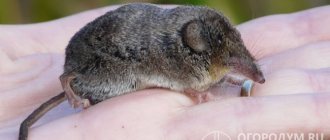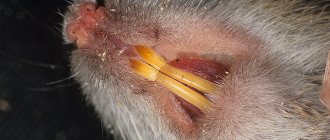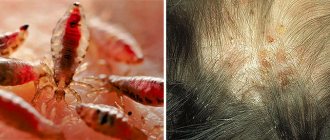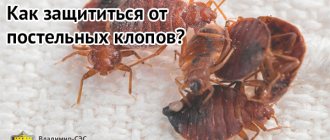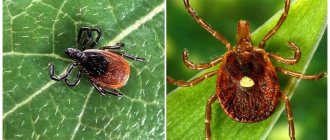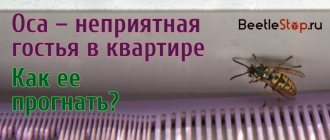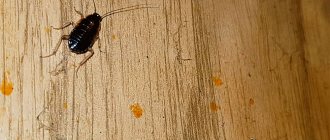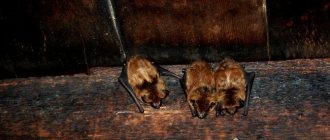In summer cottages and homesteads, you can sometimes find a miniature creature loosening the beds. With its long nose, the mouse-like animal tears up the upper layers of the soil in search of food, which is how it got its name - the shrew.
Someone begins to protect the baby, considering him useful, since he helps exterminate harmful insects, and some begin to expel these tiny animals from their territory in every possible way.
Structure and appearance
A mouse with a long nose is also called a shrew. Outwardly, it very much resembles a vole. But unlike her, this animal has a long nose, which looks more like a proboscis. The rodent's eyes are small and can be hidden behind the fur.
During evolution, the shrew has lost its visual acuity, so it uses a keen sense of smell and excellent hearing to orient itself in space.
The animal's body is elongated and covered with smooth dark brown fur, to which the earth does not stick. The shrew's front legs are short and very weak. They are not designed for digging. Therefore, an animal can make a tunnel or burrow for itself only in loose soil, or it uses passages made by moles or other animals.
Interesting! Depending on the species, the shrew may have a long tail or no tail at all. At the base of the tail of the long-nosed mouse there are glands that secrete a secretion with a pungent musky odor.
How to get rid of a shrew
Although the shrew itself does not cause harm, a large population on the site requires timely intervention. There are a number of ways to expel it. Shrews are often credited with gnawed roots. But that's not true. The maximum they are capable of is digging at the roots, where they look for food.
Traps that act like mousetraps, with bait inside. There are live traps or mechanical crushers.
Repellers that emit unpleasant sounds for the sensitive hearing of shrews. They can be homemade or purchased.
Poisons that the animal will eat and die. These are the same drugs that are used against moles, rats and mice. They require careful handling
Smoke bombs and gases that will scare off the smell of animals. Safe means include tobacco, shag, bleach or naphthalene.
Shrews have an excellent sense of smell. They can be easily driven away from the area with the help of scattered rotten fish.
Varieties
There are more than 350 species of shrews. Only 25 of them are found in Russia. The most common types of long-nosed mice are:
- Common shrew. It can reach 8 cm in length, while its weight does not exceed 160 g. The body is covered with soft brown fur. A nose with a blunt tip is clearly visible on the head. The length of the animal's tail is equal to the length of its body.
- Tiny shrew. It got its name due to its very small size. Its weight is only 3 g, and its body length is 5 cm. The animal is recognized as the smallest representative of the mammal family. His nose is like a proboscis, and his short fur is gray-brown.
- House shrew or long-tailed shrew. This mouse can often be found in the vegetable garden or garden. For the winter, she moves to cellars or basements of private houses. The body length of this long-nosed mouse is about 8 cm, and the tail is up to 5 cm.
Tiny shrew
Lifestyle
The shrew mouse tries to stay away from human possessions, forced to relocate by necessity - premature frosts, floods, fires, lack of food.
In the wild, shrews feed on insects, worms, and small species of mammals. They readily eat plant foods. They bring more benefit to humans than harm - they eat harmful insects. However, in case of a severe invasion, measures must be taken, since the shrew damages crops in the fields.
The animal lives no more than 2 years, often becoming a victim of attacks by wild animals, its large relatives, birds, lizards, and snakes. It is nocturnal and builds burrows underground.
The shrew has an excellent sense of smell. This feeling helps her live, since the animal’s vision is extremely weak. In this, the mouse is similar to another underground inhabitant - the mole.
The elongated nose of the mouse can be interestingly bent upward to catch the aroma of food or the smell of an enemy. The nasal passage serves as both the eyes and the respiratory organ.
Duration and lifestyle
The shrew mouse leads a predominantly terrestrial lifestyle, but some species live underground or in the hollows of old trees. The animal is active around the clock, taking only short breaks to sleep. But you can see shrews on the surface mainly in the dark, because sunlight blinds them.
Since the shrew’s visual organs are poorly developed, it uses its keen sense of smell to search for food. The animal rarely lives longer than 1.5–2 years, as it often becomes prey for birds, snakes, wild animals or humans.
Effective methods of control
The common shrew is an integral part of the evolution of the animal world. Birds of prey, such as owls, feed on them. Weasels and ferrets catch these animals. Sometimes they become victims of foxes and pets. Dogs, cats and wild animals often mistake them for mice, but do not eat them because shrews have a specific smell.
A shrew is a very undesirable guest in a private household. How can you combat it effectively? How to get rid of shrews if they cause significant damage to your homestead?
- The common shrew is very afraid of noise. It does not survive in noisy conditions. The fight against this animal involves creating rattle devices from plastic bottles or tin cans, the so-called windbreakers. The noise and vibrations they create repel shrews.
- Ultrasonic industrial repellers are effective in the fight against small mammals.
- If you have been looking for a way to catch a shrew for a long time, you can use pesticides that are suitable for killing rodents. But it should be taken into account that you will need a lot of poison, because you need to put it in every hole of the big “house” of the animal.
- Many gardeners use the simplest method - filling holes with water. But shrews, which are accustomed to a humid environment, can only leave the area they like for a while.
- Shrews have a very developed sense of smell; they cannot tolerate strong aromas - missing herring, kerosene, mothballs. By scattering such a drug around the perimeter of the site, you can expect a lasting effect.
- Many fragrant flowers and herbs repel shrews - wormwood, imperial hazel grouse, marigolds, mint, peas and lentils. By planting them in the island areas of your garden or garden, you can forget about the nimble animals for a long time.
- Even against these animals, dry inflorescences of marigolds, which are mixed with foliage in the garden, or filled with burrow entrances, are effective.
- Installing a trap trap allows you to catch shrews. This is the best remedy for harmful moles and small shrews. Traps can be made either independently or purchased at a hardware store.
- How to deal with gluttons manually? Deep digging of a vegetable garden or garden plot allows you to destroy dug underground passages and nests of animals. This method of forced eviction of “neighbors” often works effectively.
A caught animal is not harmless. It can bite painfully, so don't pick it up. It's better to view it remotely.
Now you know how to deal with annoying shrews using special and improvised devices. Having gotten rid of uninvited guests, do not rush to plant the area with new ones. To ensure that your efforts are not in vain, make sure that the problem is finally resolved.
Habitat
Shrews are found almost everywhere, with the exception of the polar regions, southern regions of Australia, South America, and New Guinea. They are especially numerous in North America, Eurasia and Africa.
Mice with a long nose live on flat terrain, in tropical forests, mountain tundra, deserts, and near swamps. Some species of shrews lead a semi-aquatic life.
Interesting! No more than one pair of these animals can live on a plot of several hundred square meters. They are not prone to migration and can live their entire lives in one territory. An exception is possible only in case of danger or lack of food.
The animal tries to stay as far away from people as possible. Shrews settle in abandoned burrows of moles and other rodents; they can live on the banks of swamps and in the hollows of fallen trees. But with the onset of autumn, in the event of a fire, flood or other natural disaster, they can move closer to people, settling in barns and cellars.
What does a mouse eat in the wild?
In summer and autumn, when the time comes for the harvest to ripen, mice begin to actively prepare food reserves for winter. The main food of the animals is grain crops, as well as seeds of various plants. Field mice love wheat, barley, oats, and buckwheat.
Rodents living in forests feed on cedar and hazel nuts, maple and beech seeds, acorns, and small insects. And animals living near bodies of water prefer to eat leaves, roots and stems of plants, berries, grasshoppers, caterpillars, larvae, spiders and other invertebrates. House mice living near people willingly adapt to the human diet and eat bread, meat, dairy products, and sweets.
Animals living in the wild drink very little. The mouse body independently produces water by breaking down food. Additional sources of moisture are fleshy plant leaves, fruits, and vegetables.
Interesting Facts
Mice with a long nose attract increased interest. Scientists managed to find out some interesting facts about these animals:
- Some shrews can be poisonous. For example, the site of a short tooth shrew bite may become swollen. This is how an allergic reaction to its poison manifests itself. The animal needs it in order to hit prey, the size of which exceeds the shrew itself.
- Shrew cubs are born completely blind, naked and helpless, but from birth they have a full set of teeth, which are covered with strong enamel. Females use a curious method to carry their babies. One of the cubs grabs the mother’s tail with its paws, the second clings to the tail of the first, etc.
- The size of a mouse's brain is 1/10 of its body. This figure exceeds the ratio between humans and dolphins.
- Despite the fact that the shrew is tiny in size, it can be quite aggressive. This is especially evident at the moment when someone encroaches on its territory or prey. She will attack without hesitation in such a situation if the size of the uninvited guest exceeds the size of the mouse itself.
- In autumn, the animals decrease in size, and their skulls become flatter. In spring, the animal's body returns to its natural parameters.
- The shrew's heartbeat reaches 700 beats in 1 minute, and due to fright it can rise to 1200. The animal is so timid that it can die from a sharp sound or even a clap of thunder.
- This mouse's metabolism is so strong that to provide itself with energy, it has to eat an amount of food per day that is 6 times its own weight.
Nutritional Features
Due to the fact that a mouse with a long nose has an increased metabolism, the animal constantly needs food. Moreover, the smaller the individual, the more often the shrew should eat.
Without food, it can last no longer than 5–9 hours, which is why the animal’s sleep is short-lived. With a lack of nutrients, the animal is capable of falling into torpor, as a result of which its body temperature decreases.
The shrew's diet is based on worms, various insects and their larvae that live in the ground. Sometimes they attack small amphibians, mice, and lizards. When there is a lack of animal food, mice with long noses are able to look for an alternative and eat the seeds of fruit or coniferous trees.
Using ultrasonic repellers
You can try to scare the shrew away from the area by using repellent devices. They are mechanical, electromechanical and electronic.
You can make mechanical shrew repellers with your own hands. For this you will need old glass or tin jars, glass and plastic bottles. They are put on an iron rod, which is stuck into the ground so that it is located below the passages of the animals. Such a device will scare away the pest from the garden with sharp sounds and vibrations of the soil when the bottle or jar is exposed to wind.
If you are making a “spinner” from a plastic bottle, then in its bottom you need to make a hole with a diameter slightly larger than the diameter of the pin on which you plan to put it. Then rectangular windows are made on four sides of the bottle, one edge of which should be bent. When the wind blows, the bottle will spin and make a scary sound.
Computer disks hanging on ropes will have the same effect.
installation of ultrasonic repellers.
Of these repellers, we can recommend “Tornado OZV 01”. It is capable of scaring away shrews, moles, and mole crickets with the help of periodically emitted vibrations at a distance of 20-30 m. It is installed in the garden.
A more powerful device is “Anti-Crote”. Its range of action is up to 1000 m.
Natural enemies
Due to their small size, the animals are vulnerable to larger animals. The long-nosed mouse can become a victim of birds of prey, ferrets, weasels, cats, dogs, and foxes. However, predators usually refuse a snack if they smell the peculiar aroma of a shrew.
The enemy of this mouse is also man. People often mistake them for pests and destroy them. But, as practice shows, these animals bring more benefits. Of course, they can damage the root systems of small plants when they dig while chasing their prey.
But at the same time, they perfectly loosen the soil, saturate it with oxygen and fight insects that pose a danger to the crop. They manage to destroy pests in places where even birds are unable to reach them.
Harm and benefits of shrews
These animals can be both useful and harmful, it all depends on the number of animals on the site.
Shrews help farmers kill snails, bears, wood lice and other pests. In addition, they take them from under stones, from holes where birds cannot get into. This loosens the soil, which has a beneficial effect on the plants.
The disadvantages of these mammals being on site are felt when their usual food is no longer sufficient. They easily switch to cereals and fruits. It also affects the roots of plants, which unconsciously harm animals when they try to get food.
Reproduction and offspring
Typically, a female gives birth only 1–2 times during the year, less often – 3. Pregnancy in shrews lasts 2–3 weeks, after which 4 to 14 babies are born.
Both parents are involved in arranging the nest for future babies. They line it with dry grass and leaves. The cubs are born absolutely helpless, but within a month they can begin an independent life.
Pregnancy, babies
A pregnant shrew carefully prepares for her litter. She lines her hole with dry leaves and grass to create a fairly soft litter. In May-July, about 6-10 cubs appear. At first the mother looks after them with trepidation and care, but very quickly her love fades. Then the cubs themselves go in search of food.
The shrew is very active and agile - it runs very fast, jumps far and even swims, if necessary. She makes whistling sounds. He has a highly developed sense of smell, but most likely never uses his sight and hearing.
Population and species status
Shrews prefer a solitary existence. They always fight for their territory. Mice warn that the area is occupied by the peculiar smell that their glands emit. Today, some species of long-nosed mice are on the verge of extinction.
This is due to the uprooting of forests and intensive human agricultural activities. The Eisentraut's shrew, Rampian mouse-like shrew and forest shrew are already listed in the Red Book.
Long-nosed mice are good helpers for farmers and gardeners, as they destroy crop pests. But in the absence of live food, they easily switch to seeds to wait out the difficult period.
